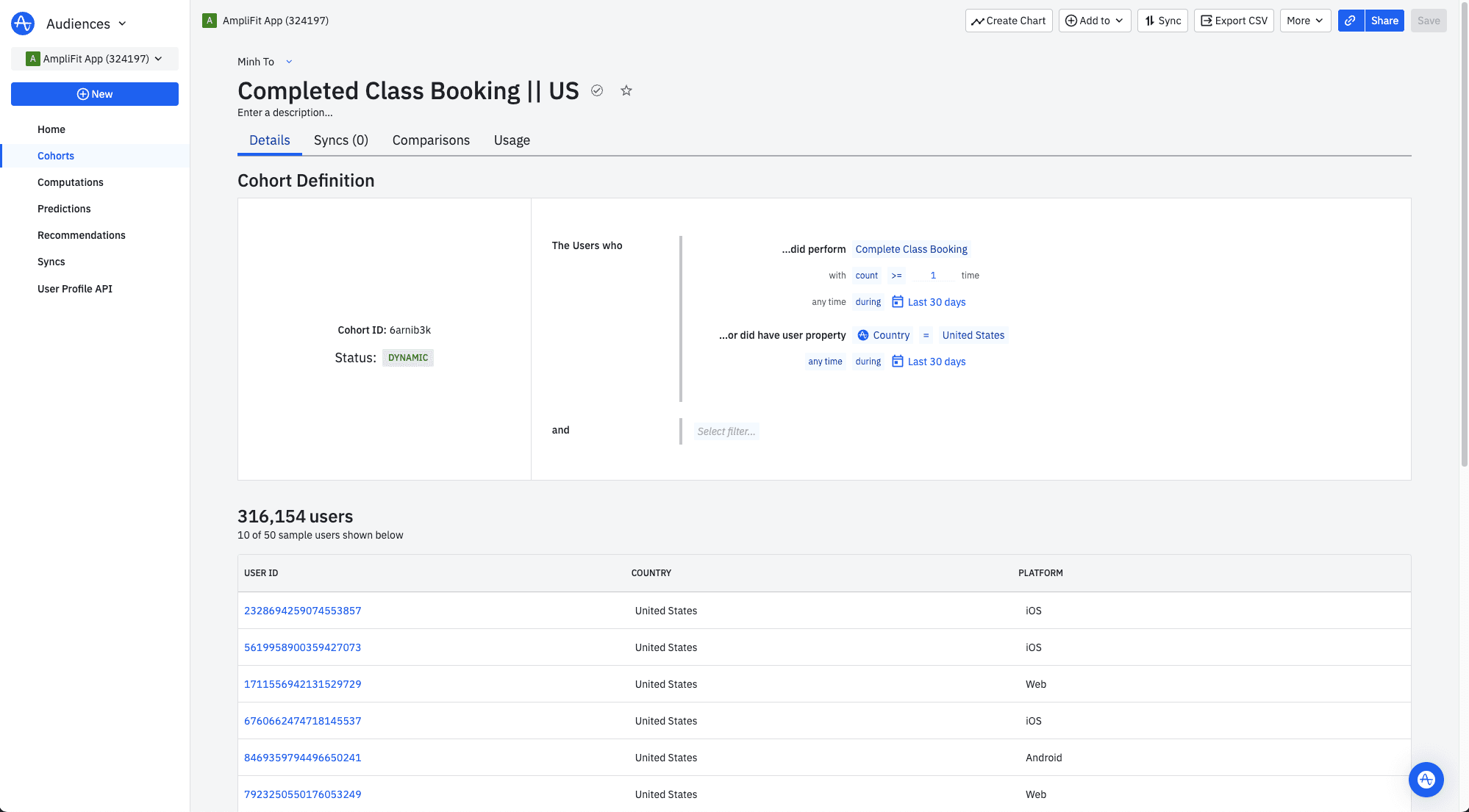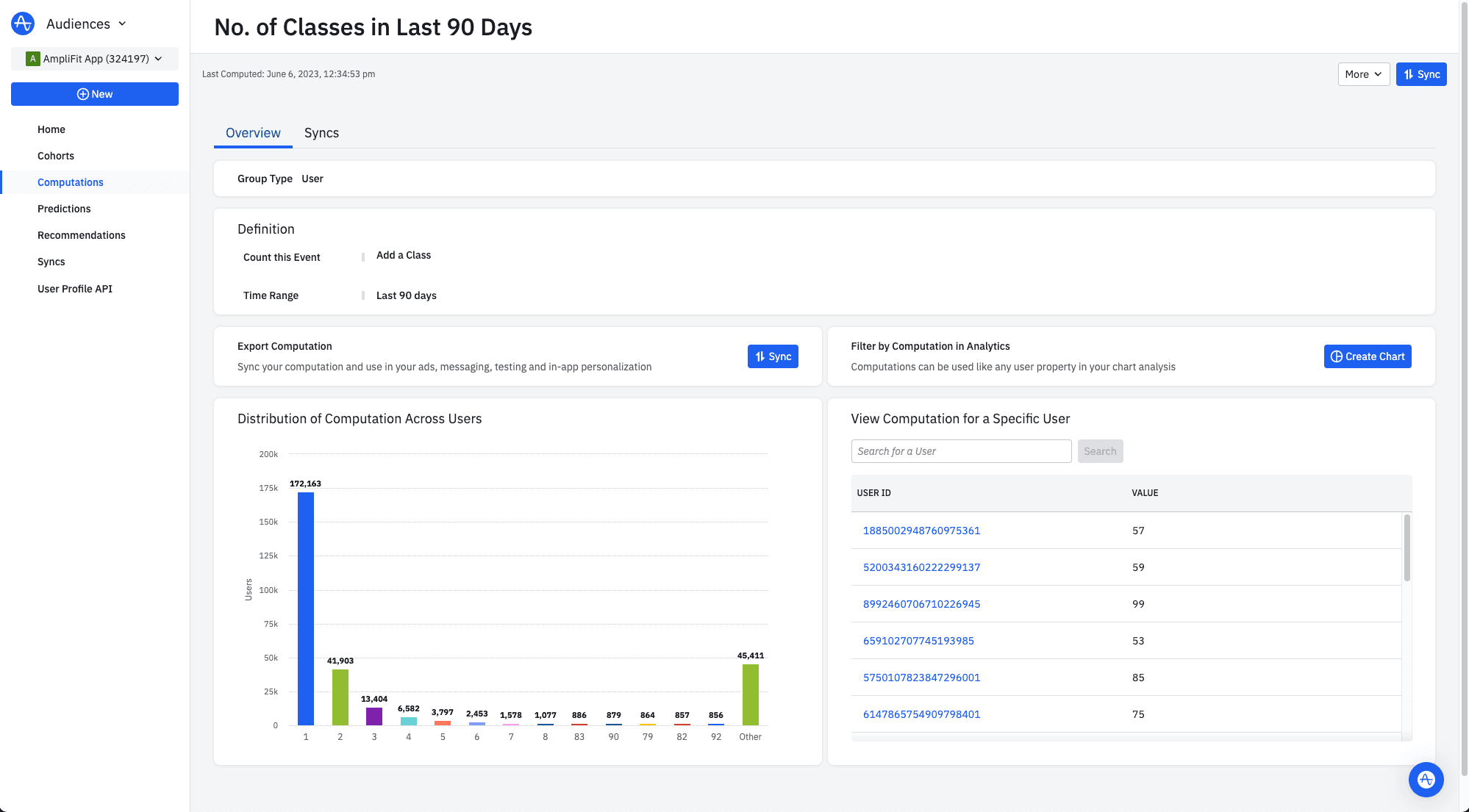The Recipe for Personalization at Scale with Amplitude Audiences
Start your personalization journey by overcoming your data challenges with Amplitude.
This blog post was co-authored by Nick DeCesare, Principal Consultant, Slalom.
In an era where customer expectations are soaring, businesses strive to deliver personalized experiences that cater to individual needs and preferences to stay competitive. In fact, with 66% of customers expecting brands to understand their wants and needs, strategic personalization has become a driving force behind customer engagement, loyalty, and increased investment into a business.
While personalization has been the desire of many businesses, only some have been able to do it well. At Slalom, we have seen data as a constant obstacle to making personalization and journey orchestration work for clients for a few key reasons:
Oversimplified strategies
Now that early adopters have tested and reaped some rewards for personalized experiences, customers demand it more than ever. We are seeing a desire to short-cycle the process of personalization, but in doing this, companies seem to default to traditional demographic or other profile-based targeting with metrics like click-throughs or time on site. By not taking a step back to clearly understand what personalization factors will be meaningful to customers, companies struggle to show the downstream ROI of their personalization efforts.
Data collection and management
Data poses a significant challenge for personalization ROI. Gartner’s 2019 report predicted that 80% of marketers would abandon personalization efforts by 2025, citing difficulties in gathering customer data as a primary reason. Customers’ diminishing trust in data protection has made them hesitant to share personal information. As companies relied on third-party cookies for customer insights, the upcoming deprecation of these cookies puts them at a disadvantage. To stay ahead in personalization, companies need to prioritize consent-driven first-party data collection, reducing reliance on third-party cookies. Identifying these gaps now will help build the necessary data foundation for future proven personalization strategies.
Even when data is collected, it often resides in various platforms without a unified ID, making effective targeting challenging beyond a few stitched-together touchpoints. For example, assortment optimization requires data from multiple sources, such as customer data, transition, product assortment, and product information systems. If the data lacks the necessary structure, it becomes a hurdle for ML models to perform effectively.
Complexity of operations
A follow up report from Gartner in 2021 suggested that 63% of digital marketing leaders continue to face challenges with personalization due to difficulties in implementing AI/ML technology. However, the main hurdles are not solely technical but rather stem from strategy and operational issues.
The separation of technology ownership and management from the overall strategy poses a significant challenge. Successful personalization relies on strong hypotheses, a clear understanding of desired customer experiences, and how personalization contributes to those experiences. Often, technical teams purchase personalization software without full alignment and collaboration with business teams, leading to a lack of clarity in customer experience requirements, opportunity definition processes, and ownership and service level agreements (SLAs) for strategy and execution.
As a result of this misalignment, analytical and technology teams become disconnected from the customer experience, essential data may not be provided to inform the models, and business teams struggle to grasp the technical requirements for effective implementation. The result is a constant internal friction around expectations and models that may be oversimplified and do not deliver the desired ROI.
Rethinking your personalization approach
Personalization does not have to be overcomplicated with the right foundational elements, and it starts with aligning cross-functional stakeholders on a strategy.
- Align stakeholders on a strategy by identifying customer challenges that leverage existing data. What are some challenges holding customers back? What are some of the behaviors that drive higher engagement or value? Answering these questions will allow companies to move away from traditional demographic personalization methods and more towards contextual or predictive personalization.
- Define the channels and messages where personalization will have the most impact across advertising, digital platforms, and marketing automation channels.
- Determine necessary data for the model based on this strategy. With your hypothesis and metrics, you can build out data requirements and map to data sources for the model. This may expose some data gaps in delivering the desired model.
- Ensure that the data is complete and has been governed in a way that it is usable. It may require some data manipulation and schematizing, but this process will help business teams understand their role in data usability and help define future governance and management methods.
- Test the hypothesis by running experiments and adjusting the model in collaboration with business and analytics teams.
- Continuously review and update strategies as data reveals new insights and opportunities. Personalization strategies need to be consistently reviewed and updated.
Amplitude Audiences + AWS Personalize: Partnering to make personalization a reality
In our recent ebook with Amplitude called The Digital Analytics Revolution: How to Build for the Future with the Right Technology, we speak to the foundational components for driving “higher order customer experiences” like personalization, and how Amplitude is set up to deliver these experiences. Amplitude’s privacy-focused event model, deterministic matching for identity resolution, and proactive data health monitoring. Paired with the impressive machine learning technology of AWS Personalize, Amplitude Audiences provides a streamlined way to create self-service recommendations.
To get the level of data exploration required to create data-backed personalization hypotheses, Amplitude allows you to bring data-driven strategies and hypotheses to the table with flexible cohorts and a variety of visualizations that allow you to navigate the data easily to dig into challenges for your challenge canvas and identify behaviors for customers meeting the outcomes you are trying to recreate.

You also do not have to rely on behaviors themselves, Audiences even allows you to create computed values of user properties. This would allow you to build a cohort based on the last item viewed, the last content piece engaged, etc.

With Amplitude, you are not confined to just the digital behaviors for hypotheses. Leverage their robust Profile APIs to pull in customer, transaction, or other operational data to enhance your analysis exploration with limited SQL required.
With this data, you can build out predictive cohorts by defining outcomes (events, properties, or combinations of the two), create custom brackets of likelihood, and even see the underlying model for your prediction.
Once you have your cohort saved, there are a variety of destinations that you can send this cohort through the cohort destinations based on the channels you have defined in your strategies with limited code required.
It is important to note that you will need to collaborate with technical and marketing teams to ensure that data management, creative assets, and digital delivery across channels are part of the strategy and setup. The customer-focused alignment will ensure that this planning is considered in your setup and launch.
Getting started on your personalization journey
If personalization is something that your company wants to accomplish this year, we are here to help. Check out our on-demand webinar, Deliver Personalized Experiences at Scale, to learn more about personalization strategies and see a short demo of Amplitude Audiences.
If you are looking to understand what you need to do to get your personalization strategy moving, fill out this quick survey, and we will reach out to schedule a workshop. You can also find Amplitude Audiences via the AWS marketplace.
About Slalom: Slalom is a purpose-led, global business and technology consulting company. From strategy to implementation, our approach is fiercely human. In eight countries and 45 markets, we deeply understand our customers—and their customers—to deliver practical, end-to-end solutions that drive meaningful impact. Backed by close partnerships with over 400 leading technology providers, our 13,000+ strong team helps people and organizations dream bigger, move faster, and build better tomorrows for all. We’re honored to be consistently recognized as a great place to work, including being one of Fortune’s 100 Best Companies to Work For eight years running. Learn more at slalom.com.

Heather Roth
Director, Digital Strategy, Slalom
Heather is a Director in Slalom’s Global Customer & Digital Strategy team, with over a decade of experience in customer data strategy, marketing analytics, and experience technology transformation.
More from Heather




